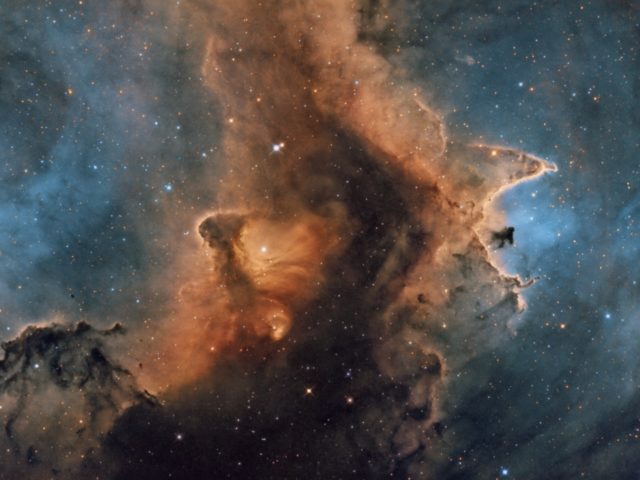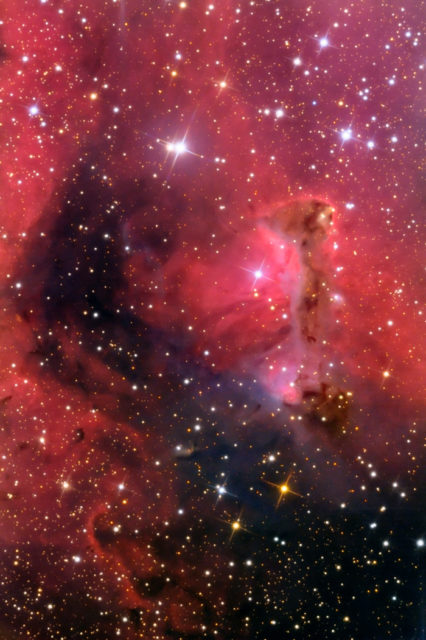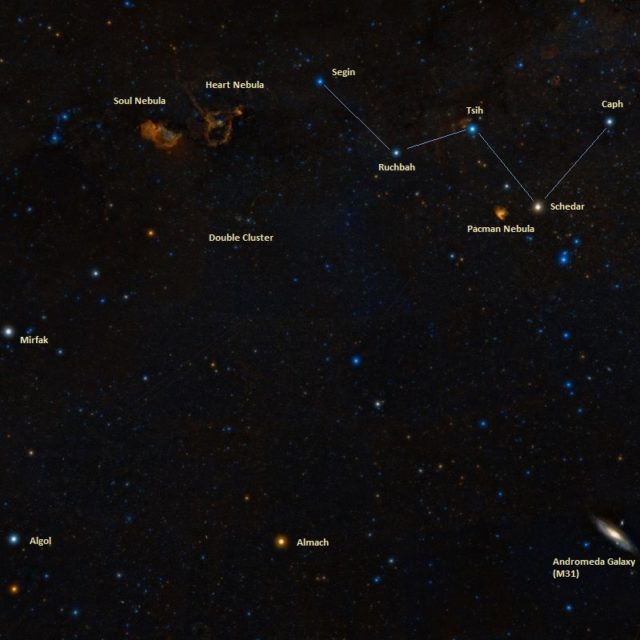The Soul Nebula (Westerhout 5) is an emission nebula located in the constellation Cassiopeia. It forms a famous pair known as the Heart and Soul with the neighbouring Heart Nebula (IC 1805). The Soul Nebula is sometimes also known as the Embryo Nebula or IC 1848, which is a designation used for the open star cluster embedded within the nebula.
The Heart and Soul Nebulae complex spans an area about 300 light years across and is a vast star-forming region illuminated by the light of the young stars surrounded by star-forming clouds of dust and gas. The two large clouds are separated by only 2.5 degrees and physically connected by a bridge of gas. The stars in the region are less than a few million years old and are only beginning their life. For comparison, our Sun has been around for almost 5 billion years.
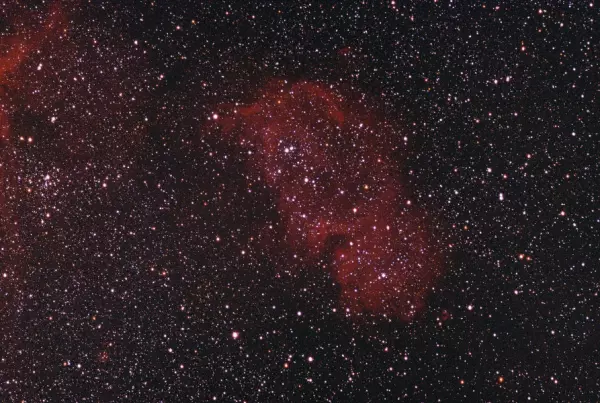
Soul Nebula (IC 1848). Image: Oliver Stein
The Soul Nebula is about 100 light years across and has an estimated age of 1 million years. It contains several small open stars clusters. IC 1848 is embedded in the body of the nebula, while the clusters CR 34, 632 and 634 can be seen in the head. Small emission nebulae IC 1871, 670 and 669 are located just next to the Soul Nebula.
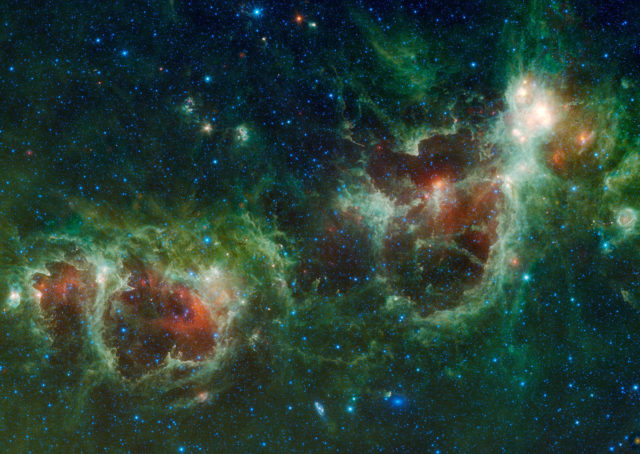
The Heart and Soul nebulae are seen in this infrared mosaic from NASA’s Wide-field Infrared Survey Explorer, or WISE. Also visible near the bottom of this image are two galaxies, Maffei 1 and Maffei 2. Maffei 1 is the bluish elliptical object and Maffei 2 is the spiral galaxy. All four infra-red detectors aboard WISE were used to make this image. Colour is representational: blue and cyan represent infra-red light at wavelengths of 3.4 and 4.6 microns, which is dominated by light from stars. Green and red represent light at 12 and 22 microns, which is mostly light from warm dust. Image: NASA/JPL-Caltech/UCLA
The Soul Nebula is being carved out by the stellar winds from the stars embedded within it, a process that leaves behind large pillars of material pointing inwards. These pillars are very dense and have stars forming at their tips. Each pillar spans about 10 light years.
The nebula is home to W5, a radio source that spans an area roughly the size of four full Moons. The radio source has large cavities that are the result of the nearby massive stars’ winds and radiation carving the nebula, pushing the gas together and causing it to ignite to form new stars.
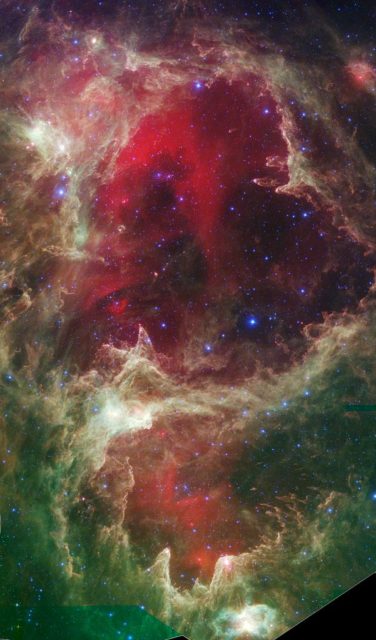
Generations of stars can be seen in this new infrared portrait from NASA’s Spitzer Space Telescope. In this wispy star-forming region, called W5, the oldest stars can be seen as blue dots in the centers of the two hollow cavities (other blue dots are background and foreground stars not associated with the region). Younger stars line the rims of the cavities, and some can be seen as pink dots at the tips of the elephant-trunk-like pillars. The white knotty areas are where the youngest stars are forming. Red shows heated dust that pervades the region’s cavities, while green highlights dense clouds. W5 spans an area of sky equivalent to four full moons and is about 6,500 light-years away in the constellation Cassiopeia. The Spitzer picture was taken over a period of 24 hours. Like other massive star-forming regions, such as Orion and Carina, W5 contains large cavities that were carved out by radiation and winds from the region’s most massive stars. According to the theory of triggered star-formation, the carving out of these cavities pushes gas together, causing it to ignite into successive generations of new stars. This image contains some of the best evidence yet for the triggered star-formation theory. Image: NASA/JPL-Caltech
Studies of the region have shown that the stars are progressively and systematically younger the more distant they are from the centre of these cavities.
The Soul Nebula lies in the vicinity of several notable deep sky objects: the galaxies Maffei 1 and Maffei 2, the Fishhead Nebula (IC 1795), and the famous Double Cluster in Perseus.
Location
Soul Nebula – Westerhout 5
Constellation: Cassiopeia
Right ascension: 02h 55m 24s
Declination: +60°24’36”
Apparent size: 150′ x 75′
Distance: 7,500 light years
Absolute magnitude: 6.5
Designations: Soul Nebula, Westerhout 5, Embryo Nebula, Sharpless 2-199, Sh2-199, LBN 667, IC 1848 (open cluster)
